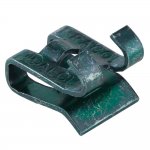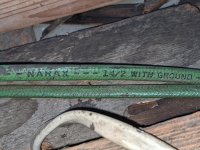A house inspector flagged a house as having "cloth wiring" on the Citizens Insurance 4 point form for Florida. The house has a combination of newer NM with ground wiring with plastic over-jacket and older NM wiring with color coded plastic insulated wires with ground and braided jacket overall. All of it has grounds. There is nowhere on the form to distinguish between cloth wiring and NM wiring that has thermoplastic PVC insulation with a braided over-jacket. So the inspector flags it as the house having cloth wiring, which can be interpreted as it having old cloth wiring over-jacket with brittle rubber insulation over the internal conductors or even older cloth wiring that has cloth and paper insulation over the copper conductors. I feel it shouldn't have to be replaced, but I am sure that if the insurance company sees "cloth wiring" they will demand it. Is this inspector overzealous, or am I wrong? To me it seems like the main purpose of the overall jacket is not to insulate the conductors, but to hold them together so they can be run together. They are inside the jacket and that outer jacket isn't what prevents them from shorting together, they have their own plastic insulation. The 4 point blank form can be seen here: https://www.citizensfla.com/documen...ction+PL/3d7e0270-2c1d-4a14-b2e6-3a796c675a7f
Thanks. Apparently this is an unclear, not definitively answered question in Florida where insurance companies run the show.
Thanks. Apparently this is an unclear, not definitively answered question in Florida where insurance companies run the show.


